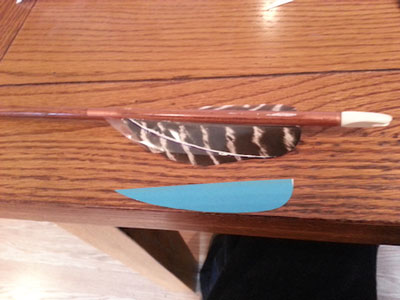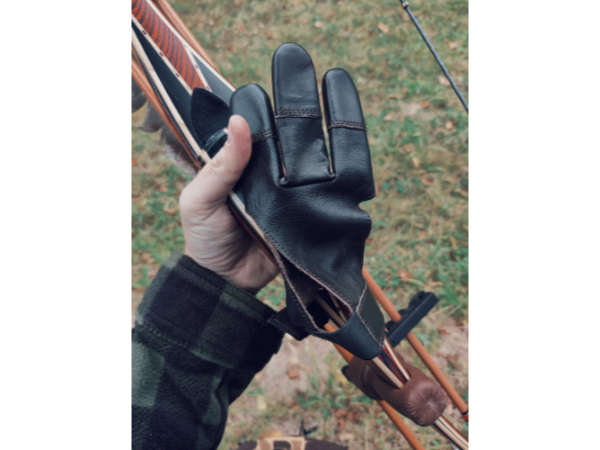There are many ways to cut feathers before fletching an arrow, but this tip will also work when cutting feathers that are already on the shaft. Sometimes it is necessary to trim them to a lower profile for arrow flight on a windy day, or you may decide that you like a banana cut feather better than a shield cut feather. You may simply find that this is the easiest and cleanest way to cut all of your feathers, before or after fletching.
Cut an old Christmas card into a thin cardboard template in any shape that you desire. Place a strip of Scotch® tape onto the feather, making sure it covers the line you will be cutting. Trace the pattern onto the tape, and cut the feather with sharp scissors. The tape holds the quills together to produce an accurate cut and a smooth edge for quiet flight.
Remove the tape and admire your work!
Editor’s Note: Speaking of beautiful work, check out Kevin’s specialty hardwood shafts and finished arrows at www.forresterwoodshafts.com.










This works very good. I have been cutting a higher profile 4″ feather and like them.
Thanks I’ve been learning how to splice feathers ang some times the profile don’t match perfect so I trim free hand this should help immensely thanks
Bit confused by the Christmas card template —–can you add more fotos to explain how to trim the tattered fletching ?
how does the xmas card fit onto the feather fletch ? cannot see what goes on –please clarify –(African bowhunter -Zululand)
It doesn’t have to be a Christmas card, just a piece of cardboard/heavy paper about that weight. Put tape on the fletching, place the card paper template over the feather and outline the design. Then cut the feather and tape at the same time to keep the fletching from fraying. I hope that helps.
Good idea.
Blue painter’s tape works good too. It sticks well enough to fletching. And peels off easily … likely more easily than scotch tape.
Another tip–use a sufficiently long sharp scissors or shears (longer than the one pictured) so that the trim can be made in a single smooth long cut rather than snipped around. Taking several snips tends to leave a little jog in the smooth trim where each new snip is taken.